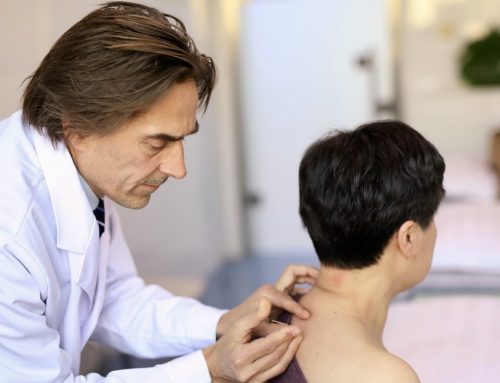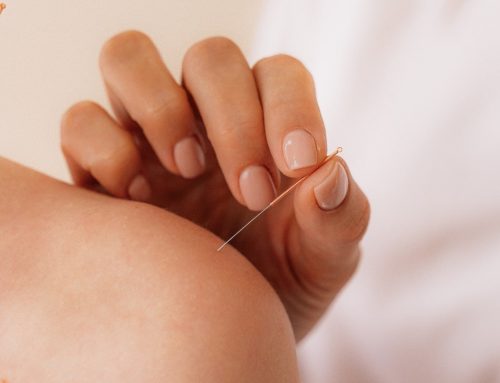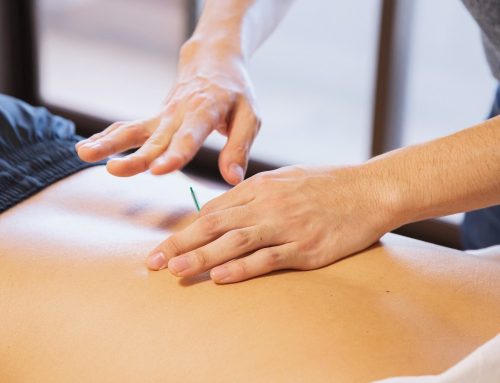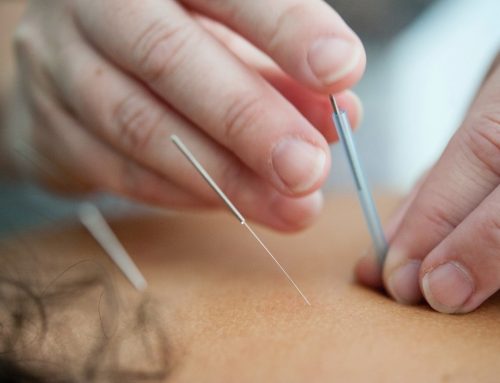Trigger point dry needling is an effective pain relief treatment because it works by addressing painful myofascial trigger points (“knots”) in the muscle. Fine filament needles are inserted into the center of these myofascial trigger points within the muscle, causing problematic muscle fibers to contract and then relax. Fresh oxygen and nutrients are absorbed, and the result is a reduction of pain and a restored range of motion. While trigger point dry needling can be used to treat virtually any muscle, we’re outlining the 10 muscle groups that respond best to this cutting-edge therapy.
1. Deltoids
The deltoid is involved in almost all shoulder movement and is made up of three sections: anterior, middle, and posterior. These sections wrap superficially around the shoulder, making it a muscle group that is difficult to stretch and prone to knots and tension. Pain in the deltoid can be severe and stubborn to traditional physical therapy treatments, making it a great candidate for trigger point dry needling.
2. Latissimus Dorsi
The Latissimus Dorsi is the largest muscle in the upper body, running along the hip, shoulder, upper back, lower back, and rib cage. Knots and tightness in this muscle can be especially problematic, leading to chronic shoulder pain and chronic back pain, particularly in the upper back. Like the deltoid muscle group, the Latissimus Dorsi is a particularly difficult muscle to stretch. As a result, this muscle is a great candidate for trigger point dry needling.
3. TFL/ITB
The Tensor Fascia Latae (TFL) is a small muscle connected to the ITB (iliotibial band). The TFL is a hip flexor, and by relaxing it through trigger point dry needling, knee pain and IBT pain can be relieved.
4. Glutes
Tightness and problematic knots in the glute muscles can lead to lower back, hip, and even knee pain. Because the glute muscles are a deep muscle group, they are ideal for being accessed through trigger point dry needling when compared to other traditional treatments.
5. Calf (Gastrocnemius & Soleus)
Trigger point dry needling is effective for relieving the tightness and tender knots that can affect the calf and limit flexibility. While deep tissue massage is also effective for relieving pain in this muscle, many patients find trigger point dry needling to provide relief more quickly by comparison.
6. Upper Trapezius
Trigger point dry needling makes it possible to pinpoint tension in the upper traps. Studies have found it to provide immediate pain reduction in this particular muscle group and effectively increase blood circulation.
7. Infraspinatus
This small muscle is situated behind the shoulder blade and can often be the culprit of pain deep in the front of the shoulder. While dry needling this muscle will produce soreness, this is usually short-lived and pain relief is significant.
8. Wrist Extensors
Dry needle therapy is particularly effective for treating “tennis elbow,” which is a condition that primarily affects the wrist extensors. Dry needling has been shown to increase blood supply and oxygenate the extensors, drastically accelerating healing time.
9. Biceps
The biceps receive a lot of daily stress, and many patients often neglect to stretch them. Dry needling the bicep can relieve tension and also provide relief to related shoulder pain.
10. Hamstrings
Tight hamstrings are relatively common—unfortunately, so is improper stretching. As a result, dry needling provides a release of tension and allows for the muscle to be properly lengthened through strength training.
Dry Needling in Jacksonville, FL
For many patients seeking recovery from injury or natural solutions to pain relief, dry needling is an effective and powerful treatment. If pain or injury to any of the above muscle groups is affecting your quality of life, Dry Needle Pain Relief can help. Our goal is to bring pain relief and injury recovery to the Jacksonville area through experienced doctors and proven techniques. To learn more about our dry needling services, contact us today to book an appointment!








Leave A Comment